Bikes remain one of the world’s most popular modes of transportation. There are numerous varieties, each with a distinct weight capacity.
However, in all situations, a bike’s maximum weight load capacity is determined by just a few key factors: its structural design as well as the resources used to create its essential parts.

Bike weight limits are a contentious issue. Some argue that whenever it pertains to bike safety, the cyclist’s age and height are more important than their weight. Others are unaware that bicycles carry a weight limit.
Whatever side you’re on, there’s a point that we can all agree on — understanding your bicycle’s weight limit helps you select the ideal bike for your unique needs.
In this essay, you’ll learn what bike weight limit a bike may support. We are going to also provide a few recommendations for heavy people searching for a decent bike that can handle their weight.

Table of Contents
Do bicycles have weight limits?
Yes, bicycles have weight limits. The weight limit can vary depending on the type of bicycle and its components.
For example, a road bike may have a weight limit of around 250 pounds, while a mountain bike may have a weight limit of around 300 pounds.
Sadly, road and mountain bikes are frequently restricted to a single model of bike saddle, which could render your ride stressful on or off-road, if these bike saddles do not fit your body size.
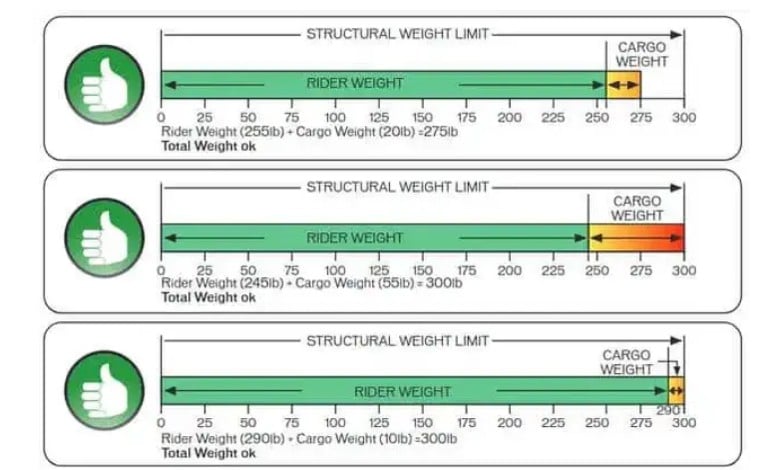
It is important to check the manufacturer’s recommendations for the specific bicycle model to ensure that you do not exceed the bike weight limit and risk damaging the bike or compromising your safety.
Factors affecting a bicycle’s weight limit
The bike’s weight capacity is measured by its framework, suspension, tires, and wheel size. Because of the variances among these variables, certain bicycles will have the capacity to handle greater weight than others.
To establish if a bicycle possesses elevated weight limits, you must examine all of its parts. Let’s start by explaining.
Frame material
The material of a bike frame dictates the amount of weight limit it can hold. Bike frames are made from a variety of materials including steel, aluminum, titanium, and carbon fiber.
Some bicycle makers even provide an alloyed steel frame that permits their bicycles to handle greater weight limits for heavier riders.
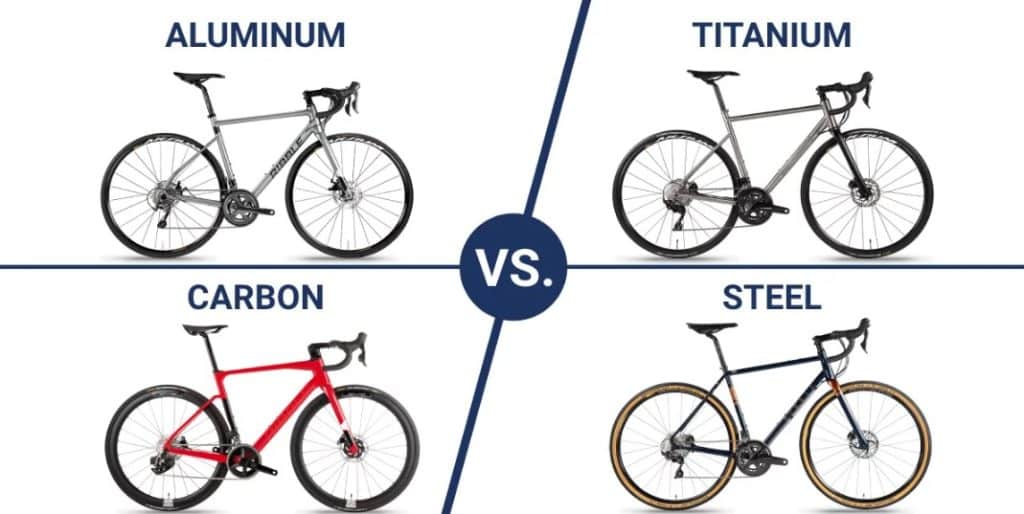
Steel is unquestionably the best material for overweight people, promptly followed by aluminum, the two of which possess stronger mechanical strength capabilities than carbon fiber. Aluminum has the benefit of being lighter and more resistant to rust than steel.
Wheels
A bicycle’s wheels are constantly under tension, which is a limiting issue. To put it simply, the greater the diameter of the wheel, the lower the weight it can support. For instance, 26″ or 27.5″ wheels are often far stronger than 29″ wheels.
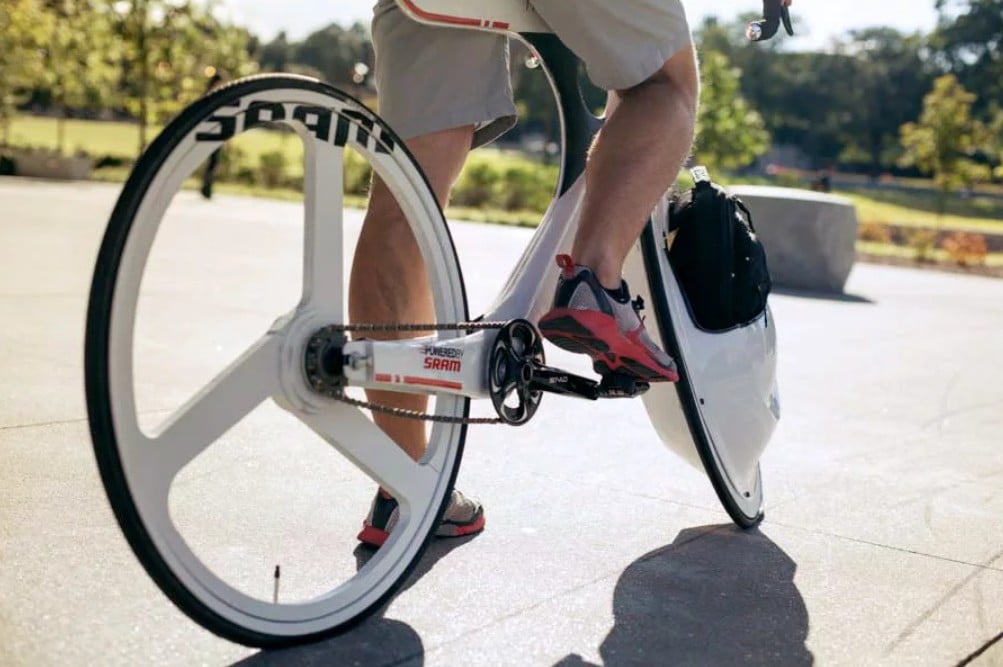
As a result, consider wheel size whenever purchasing your new baby. The total number of spokes that connect on your wheels can also affect their strength; aim for 32 or 36 spokes per wheel for optimal resistance.
Furthermore, if you happen to have more weight, you should steer clear of wheel hops and rapid shocks since they might cause the wheels to loosen and put you in danger on or off-road.
Tires
Tire size is critical when purchasing a bicycle. Bear in mind that wider tires are better suited to an overweight individual.
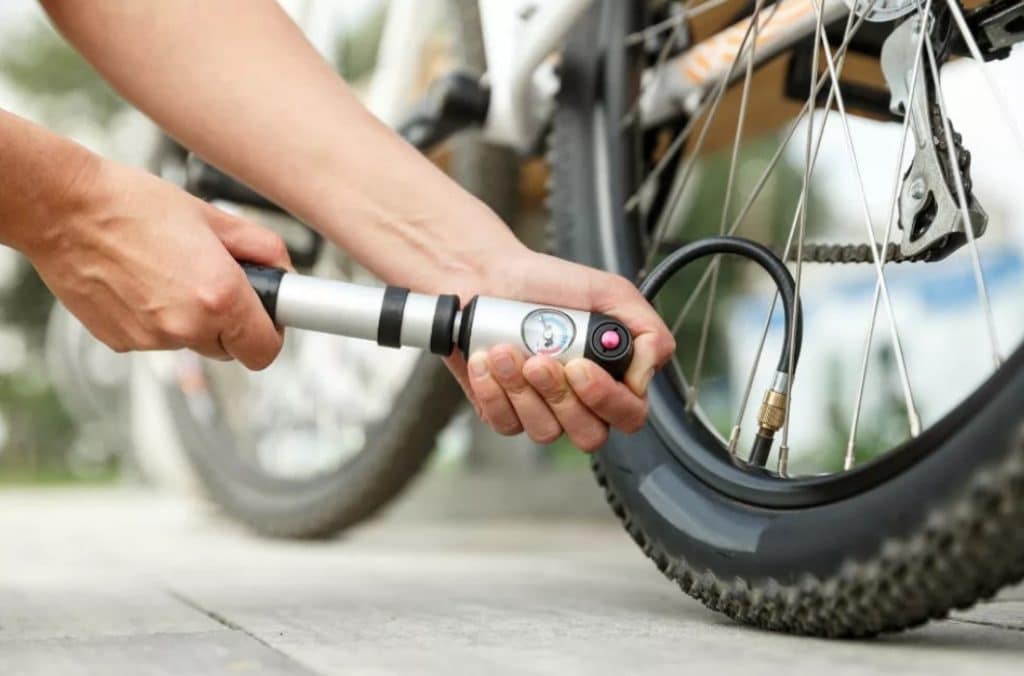
The contact area with the ground is bigger, and the structural weight limit is applied on a broader and a more equal surface, which isn’t the case with thicker tires, such as those seen on a road bike.
It will additionally be simpler to ride with larger tires, as the balance is more vital.
Road bike tires
Road bike tires were developed to operate well at high speeds on asphalt. As a result, these types of tires are typically exceedingly thin, as well as narrow, limiting their bearing weight capabilities. As a result, the majority of road bike riders weigh under 250 pounds.

Mountain bike tires
Mountain bike tires were developed to function well on rough terrain. As a result, these tires are often exceptionally thick and wide, increasing their load-bearing capacity.

Commuter/urban tires
The tires of an urban bike are thinner than those on mountain bikes. They have been, however, frequently similarly wide.
This enables them to offer stability and comfort for bicyclists who ride for a lengthy amount of time on or off-road, as well as prevent them from becoming excessively hot or slippery in rainy situations.
The companies, like MTB tires (mountain bikes), aid in increasing the weight load capacity of the bike.
Suspension
The bicycle suspension aims to reduce the effects of road bumps by absorbing the shock. It also aids in the prevention of joint strain.
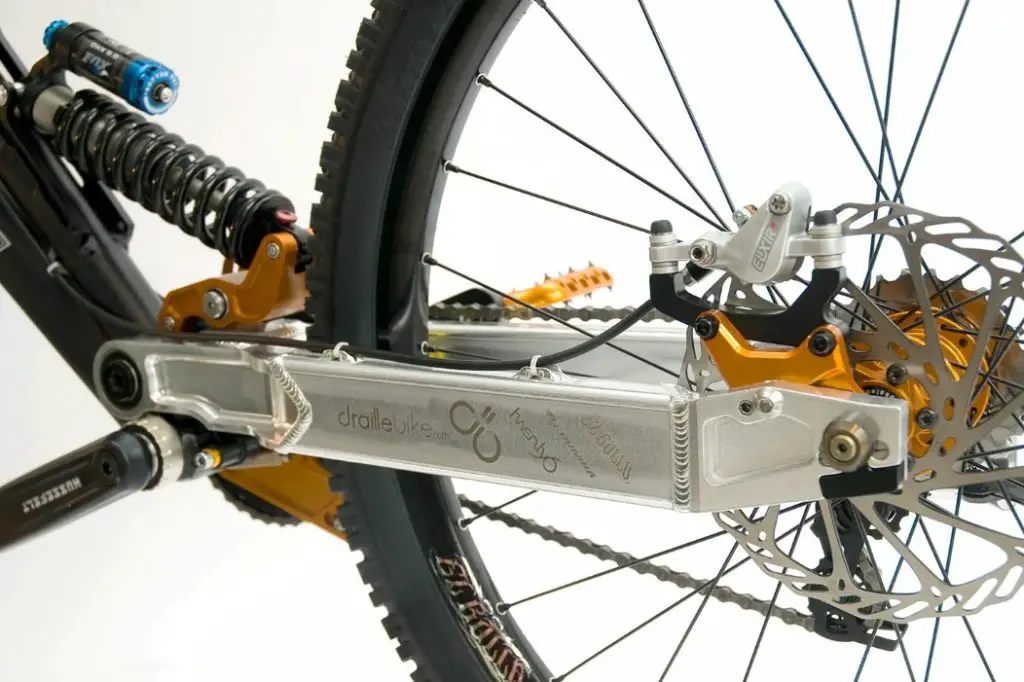
The incorporation of suspension equipment also helps the durability of a bike due to how it allows for greater force absorption in diverse landscapes.
With the proper suspension on a bike, you’ll be able to pedal across various terrains easily with little fear of harm resulting from drops or bumps along the way.
Brakes
The harder the brakes need to work to guarantee correct braking and safety, the greater the weight of the person riding them. I highly suggest disc brakes, which are going to be far more effective in any kind of weather than rim brakes (hydraulic or mechanical disc brakes are equally good).

Handlebar and seat
The handlebar is another factor to consider when it comes to convenience; bigger cyclists are going to feel more at ease with a flat handlebar because it enables a more upright riding posture, which puts fewer burdens on the lower part of the body.

The drop handlebars will push you toward bending more (particularly while in the prone position) and may cause more discomfort over time.
The size of the saddle differs based on the kind of bike, although it is typically narrow. For bigger users, certain city bikes have a broader, more comfortable saddle. In every instance, the seat can be replaced by purchasing the part separately.
Overall, when going on rides, remember to put some money into bike shorts, which is important for an ergonomic position to sit in and will certainly make a huge difference.
Should you stick to your bike’s guided weight limit?
Most individuals are unaware of their bikes’ maximum weight capacity. However, people ought to figure it out because failing to comprehend the fact that all bicycles have a certain weight capacity is harmful.
Grasp the variables that influence how much weight your bike can support. For example, if you have more weight and enjoy riding your bike on rocky terrain, you should choose a bike with a higher weight capacity that can support your weight.
Otherwise, you risk injuring yourself or anyone around you. Furthermore, it is not a good idea to subject your bike to weights that it simply cannot bear. For instance, if you happen to be an overweight rider who puts a lot of weight on the bike, parts that should last for five years may fail in just a single year.
If your bike is destroyed because it is overloaded, aside from the possibility of injury, it will cost considerably more in bike maintenance because the guarantee will be voided. As an outcome, maintenance is going to cost you either more or less than buying a bike that can manage your weight!
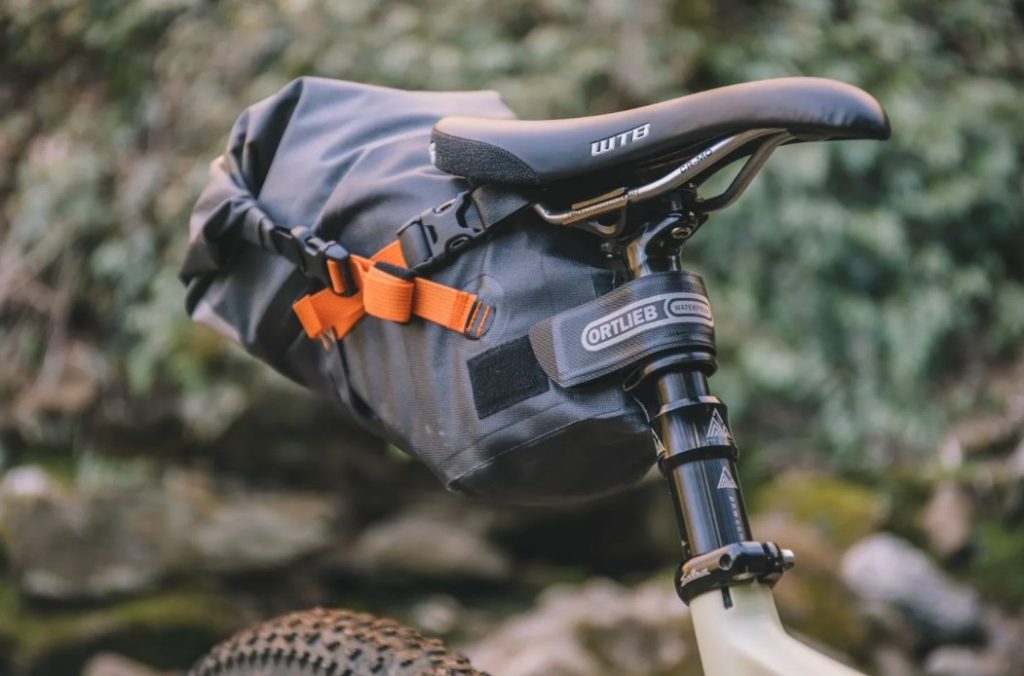
In the future, understanding your bike’s weight limits before purchasing it and investing in gear that can help it handle your weight safely will save you an immense amount of time.
Why do I have to know my bike’s weight limit?
Knowing your bike’s weight limit is important for safety reasons. If you exceed the weight limit, it can put undue stress on the bike’s components, potentially leading to failure or damage while riding. This can result in accidents.
Additionally, exceeding the bike weight limit can void any warranties or insurance coverage on the bike.
It is important to choose a bike that can safely support your weight and ensure that you do not exceed the weight limit.
- If you choose to purchase a bike that cannot withstand your body weight limit, it is going to be damaged shortly thereafter.
- If the bicycle is unable to carry the weight, you risk injuring yourself and others.
- You risk hurting yourself as well as other people if your bike cannot support the weight.You’ll be able to tell which bikes are excellent for your needs and which are not.
What bike can hold 400 pounds?
Several bikes can hold up to 400 pounds, including the ones listed below.
The Mongoose Dolomite fat tire mountain bike
This bike has a weight capacity of 500 pounds and features a sturdy steel frame, wide tires, and a comfortable saddle.
The Schwinn Twinn Tandem bike
Tandem bikes have a weight capacity of 400 pounds and feature a durable aluminum frame, comfortable seats, and reliable brakes.
The Raleigh Detour 2-Step thru comfort bike
This bike has a weight capacity of 400 pounds and features a lightweight aluminum frame, comfortable saddle, and adjustable handlebars.
The Sun Bicycles Atlas Cargo Trike
This cargo trike has a weight capacity of 400 pounds and features a sturdy steel frame, a large cargo basket, and a comfortable saddle.
It is important to note that while these bikes can hold up to 400 pounds, it is still important to properly adjust the bike and ensure it is the right fit for the rider’s size and weight.
Yes, a bike can support a heavy person. However, it is important to choose a bike that is designed to handle the weight of heavy riders. Bikes with sturdy frames, strong wheels, and high-weight capacities are recommended for heavier riders. It is also important to properly adjust the bike to ensure a comfortable and safe ride.
A person weighing 300 pounds can ride a bike. In reality, heavy riders weighing 300 lbs would be capable of riding numerous bikes from famous bike brands because the majority of them have restrictions on weight that ranges from 265 lbs to 300 lbs.
Nevertheless, it might be beneficial that you still thought about wherever you’re going to be riding. For instance, when you want to ride great distances or carry big weights, a recumbent bike is the way to go. If not, a solid mountain bike will suffice, as these types of bikes are designed to carry overweight riders weighing more than 265 pounds.
You ought to avoid riding road bikes as well, particularly gravel bikes, if you are a heavy rider till you drop a bit of weight. According to the instructions, most road bikes have a weight range of 60 to 90 kg.
Additionally, it may be helpful to consult with a bike shop or professional to ensure the right fit and components for the rider’s size and weight.
A 500-pound person can ride a bike, but it is important to find a bike that can support their weight and ensure a proper fit and adjustments are made.
Zize Bikes is a well-known brand for overweight riders. Their bikes are designed to fulfill the demands of overweight persons. Zize Bikes, particularly, are designed for big and tall people and have a carrying capacity of 550 pounds.
It may be necessary to seek out specialized bikes or modifications to accommodate a rider of this size. It is also important to consult with a doctor before starting any new exercise routine, including biking, especially if the individual has any health concerns related to their weight.
Advice for people who are overweight
Understanding that bicycles have structural weight limits is only the initial step in selecting a bike for heavy riders.
To choose a bike that suits you properly, make sure it is the right size for you (such as height and inseam).
Most bicycles for huge men or overweight ladies are classified as mountain bikes, hybrid bike, electric bikes, fat bike, or tricycles. It is what exactly makes these speedy bikes so appealing. A hybrid bike happens to be the lightest of all bicycles.
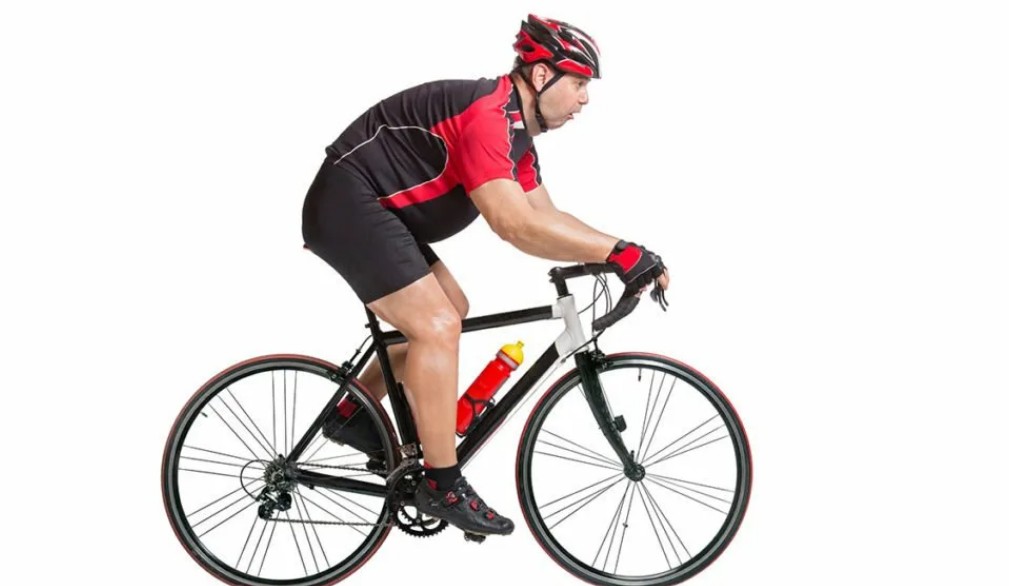
According to research, riders of an electric bike pedal more frequently and for further distances. Riding an electric bike burns only about 25% fewer calories than riding a regular bike. Because of their sturdier frames and tougher components, electric bikes might also have higher weight limitations than regular bicycles.
The weight limit of a regular bike is often between 275 and 350 pounds.
The fundamental advantage of a fat bike is that it can go over varied rough terrain, from snow to sand, more effectively than standard bicycles. The first disadvantage of a fat bike is its weight; these electric bicycles are bigger than standard battery-powered bikes.
A good heavy-duty bike additionally includes large alloy rims having a minimum of 32 spokes. Also, they will be constructed with a heavy-duty steel frame for optimal strength.
Finally, make sure to verify that the type of bicycle you choose has a weight capacity of at least 20-30 pounds bigger than the body’s weight.
The Mongoose Dolomite, which was described here, ranks as one of the top choice mountain bikes, and we believe it is going to be acceptable for heavy riders.
Read also: The best hybrid bike under 500 dollars
Conclusion
Lastly, bikes have weight limits that must be followed for security along with protecting the bike from damage. The weight restriction differs based on the kind of bike, the kind of material used, and other considerations.
Adults should get at least 150 minutes of moderate physical activity every week, according to the World Health Organization. You’re probably getting there with your current commute, however, if you’re having trouble, it could be worth trying an electric bike.
You may assure a safe and happy riding experience by verifying the weight restriction, using a bike appropriate for your body mass and riding style, and maintaining care of your bicycle. Check your bicycle regularly for symptoms of corrosion and wear out, particularly if you ride constantly or carry heavy loads.
If you tend to be a little lighter but spend more time commuting or traveling around town, the average bike weight limits should suffice. Adult wheel sizes differ, with the minimum of around 20′′, which is often seen on BMX bikes.
Hoping that you appreciated the weight guide for bicycles and can simply purchase a bicycle that is heavyweight, with a thorough evaluation of the cycle’s parts to ensure that you don’t have any catastrophes throughout the trip. Stay glued, and best of fun on your riding adventure to fitness!
Finally, bear in mind that some routes might be too difficult for specific kinds of bikes, therefore do not buy one without a thorough study.



1 thought on “How much weight can a bike hold: a step-by-step explanation”